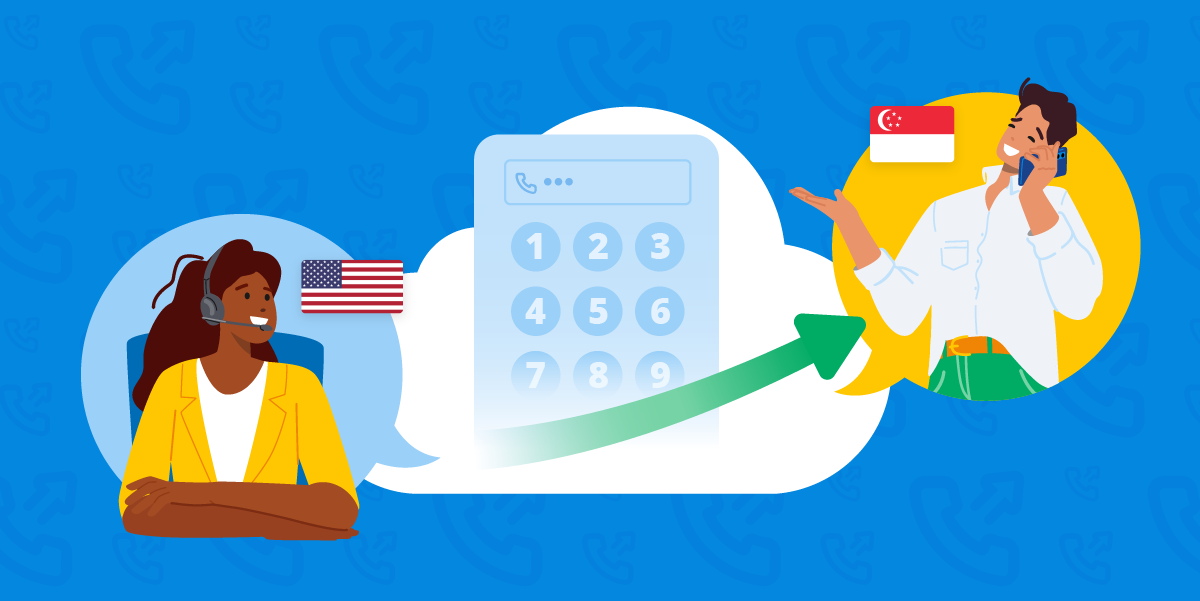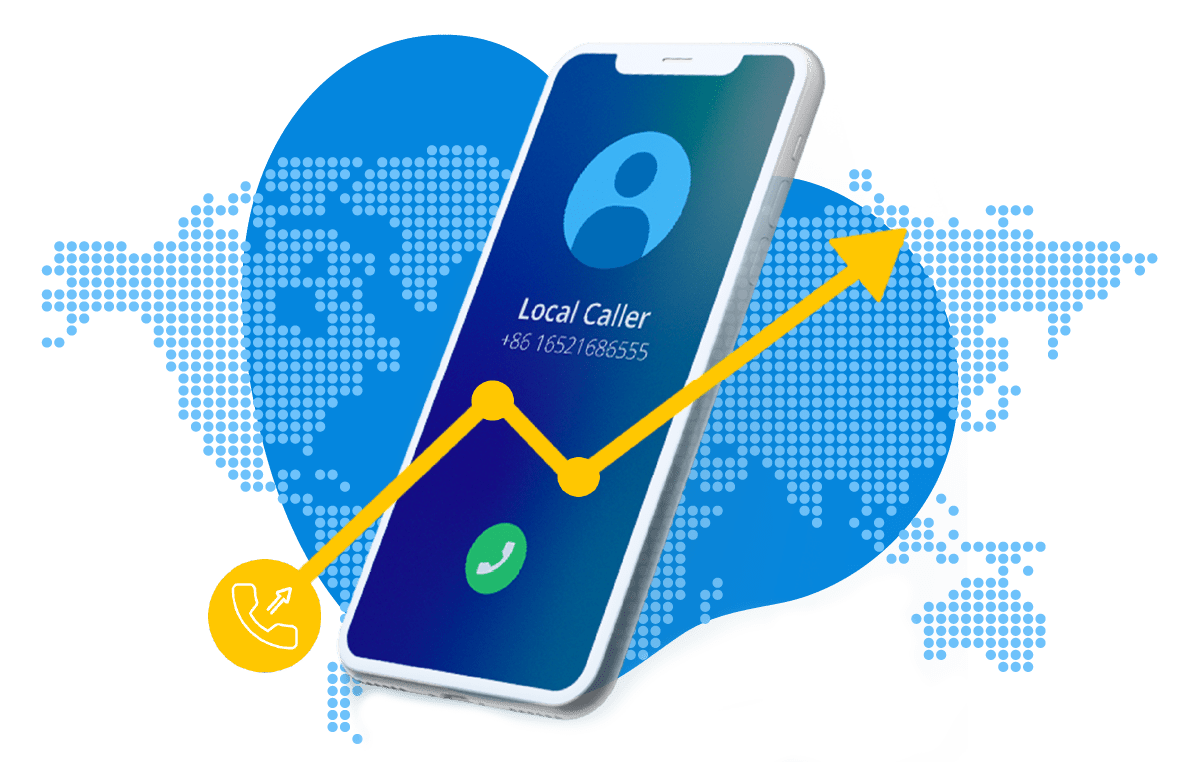Which Numbers Can I Make Outbound Calls From?

For a multinational, customer-centric operation, integrating outbound-capable phone numbers into your global contact center portfolio is a strategic move for your voice channel.
These outbound phone numbers infuse your call termination strategy with versatility and reach, providing your business with the bolstering customer engagement it deserves.
You might be thinking about which phone numbers you could leverage to make outbound calls from. Let’s take a look at their endeavor success below.
Numbers You Can Make Outbound Calls From
There are several number types in which you can make outbound calls, including:
1. Local Presence Dialing
You’ll have the most success making outbound calls using Local Presence Dialing phone numbers, or Local Direct Outward Dialing (DOD) numbers as they’re often called.
This number type gives your business a local presence through caller ID– matching your phone number’s area code with that of your call recipient– so you can increase call answer and callback rates, and build awareness and trust with your customers. This is the best-supported outbound phone number by a voice provider.
2. Non-Geographic
You’ll find that implementing Non-Geographic numbers yields moderate success for your outbound call strategy. This phone number type provides a national presence for businesses with or without physical operations there.
Its outbound calling capabilities are reliable and widely supported. While similar to Local Presence Dialing numbers, non-geographic numbers do not have local caller ID.
3. Mobile
Incorporating mobile numbers for call termination can generate moderate success because of the convenience of reaching customers directly on their mobile phones. Its outbound calling capabilities are reliable and widely supported.
4. ITFS
You’ll find that International Toll-Free Service (ITFS) phone numbers offer the least amount of success for call termination. Voice providers don’t often support ITFS for outbound calls because these numbers can be easily blocked or improperly routed.
How It Works
You can gain outbound phone numbers in several ways. Outside of provisioning your phone numbers, you can integrate call termination services and keep your preferred numbers through…
1. Number Porting
If you already have outbound-capable phone numbers, international number porting allows you to transfer them from one voice service provider to another.
Whether it’s a landline, mobile number, or virtual number, porting ensures your outbound calls maintain a familiar brand identity while benefiting from the Quality of Service (QoS), enhanced features, and competitive call rates you may be seeking from your new voice provider.
2. SIP Trunking
SIP trunking offers the capacity to expand your outbound number portfolio and reach so your agents can effortlessly engage with customers on a global scale.
SIP trunking ensures comprehensive cloud voice connectivity within your call center software, so you can ensure the right caller ID displays on your call recipient’s phone screen every time.
Benefits of Call Termination for Global Businesses
You can unlock a spectrum of voice benefits to fortify your international outbound call strategy. Let’s take a look below.
1. Lower Costs
Embracing cloud-based call termination numbers can help reduce costs. With this approach, long-distance charges are no longer a burden. Additionally, voice providers offer access to affordable plans and rates that cater to various call volume needs.
2. Streamline Voice Traffic
Efficiently managing outbound voice traffic lies at the core of call termination strategy. Voice providers consistently strive to address the challenges posed by dropped calls, delays after dialing, poor audio quality, and more– especially for long-distance calls.
Providers with expert assistance and robust call tools can ensure you navigate local documentation, regulatory compliance, and other telecommunications complexities with confidence and support.
On the backend, proactive monitoring and troubleshooting of QoS metrics such as call quality, bandwidth constraints, and queue volume are prioritized for uninterrupted delivery.
3. Increase Customer Engagement
Call termination is a robust service for elevating customer engagement. The integration of caller ID imparts a sense of trust and familiarity, which can lead to higher answer rates and more successful interactions.
Additionally, the use of local numbers encourages callbacks, as customers are more likely to respond to calls from familiar local numbers.
4. Improve Scalability
As your business grows, the need for more outbound phone numbers will too. Voice providers that offer flexible and scalable solutions through provisioning, porting, and SIP trunking provide quick expansion capabilities and the resources for consolidation, so your international phone number portfolio is simple to manage and scale within a single user-friendly platform.
5. Advanced Features
The implementation of outbound numbers brings forth a realm of advanced features to elevate your call termination strategy. Through functionalities like advanced call routing, click-to-configure IVR, and comprehensive phone number analytics, your team can utilize a range of features to optimize your outbound call strategy.
Cloud Voice Gets You More Outbound Numbers
The number type you incorporate into your call termination strategy can provide your multinational business with the most customer engagement success. By fully understanding each option and the cloud voice service associated with them, you can easily craft and execute a versatile strategy that increases the quality and quantity of your customer interactions.
Want to learn more about increasing your global call answer rate? In our webinar, we’ll show you how to increase your global call answer rate. You’ll be guided on the global marketplace, challenges and opportunities connecting with international customers, and more.

Look & Sell Local
Looking for a simple way to make better connections and increase global answer rates without having a physical market presence? Local voice + caller ID is the way to go.
